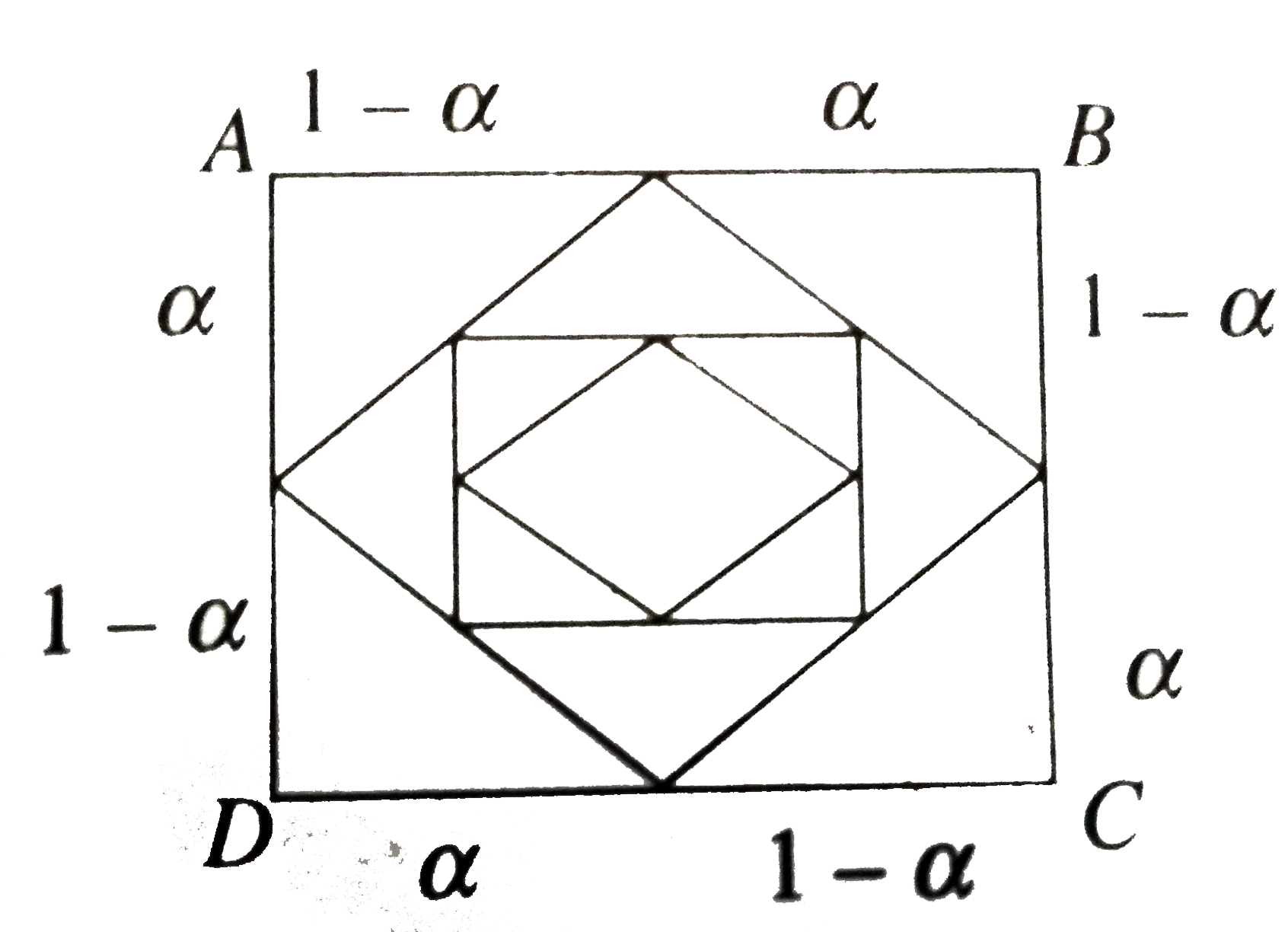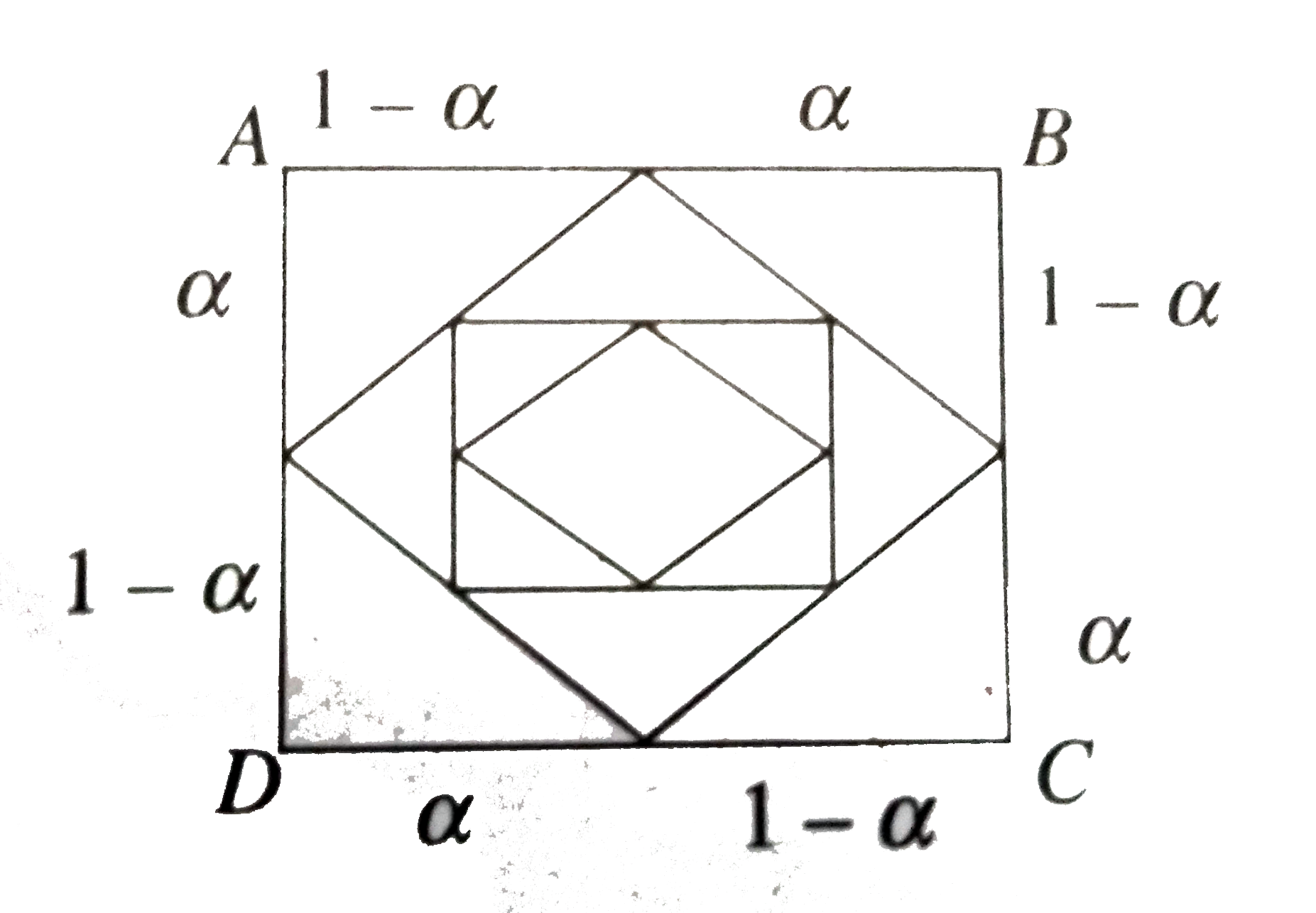Complete Solutions to Comprehension of chapter PROGRESSION AND SERIES of Class 12 book with complete answers and questions
| Class 12 | MATHS |
| Chapter | PROGRESSION AND SERIES |
| CENGAGE NEW DPP | Comprehension |
| Number Of Questions | 7 |
| Academic Year | 2023-24 |
The `1^(st)` , `2^(nd)` and `3^(rd)` terms of an arithmetic series are `a`, `b` and `a^(2)` where `'a'` is negative. The `1^(st)`, `2^(nd)` and `3^(rd)` terms of a geometric series are `a`, `a^(2)` and `b` respectively.
The sum of infinite geometric series is06:52View SolutionThe `1^(st)` , `2^(nd)` and `3^(rd)` terms of an arithmetic series are `a`, `b` and `a^(2)` where `'a'` is negative. The `1^(st)`, `2^(nd)` and `3^(rd)` terms of a geometric series are `a`, `a^(2)` and `b` respectively.
The sum of the `40` terms of the arithmetic series is09:26View Solution
Let `ABCD` is a unit square and each side of the square is divided in the ratio `alpha : (1-alpha) (0 lt alpha lt 1)` . These points are connected to obtain another square. The sides of new square are divided in the ratio `alpha : (1-alpha)` and points are joined to obtain another square. The process is continued idefinitely. Let `a_(n)` denote the length of side and `A_(n)` the area of the `n^(th)` square
If`alpha=(1)/(3)`, then the least value of `n` for which `A_(n) lt (1)/(10)` is09:01View Solution
Let `ABCD` is a unit square and each side of the square is divided in the ratio `alpha : (1-alpha) (0 lt alpha lt 1)` . These points are connected to obtain another square. The sides of new square are divided in the ratio `alpha : (1-alpha)` and points are joined to obtain another square. The process is continued idefinitely. Let `a_(n)` denote the length of side and `A_(n)` the area of the `n^(th)` square
The value of `alpha` for which `sum_(n=1)^(oo)A_(n)=(8)/(3)` is/areView Solution
Let `ABCD` is a unit square and each side of the square is divided in the ratio `alpha : (1-alpha) (0 lt alpha lt 1)` . These points are connected to obtain another square. The sides of new square are divided in the ratio `alpha : (1-alpha)` and points are joined to obtain another square. The process is continued idefinitely. Let `a_(n)` denote the length of side and `A_(n)` the area of the `n^(th)` square
The value of `alpha` for which side of `n^(th)` square equal to the diagonal of `(n+1)^(th)` square is08:24View SolutionLet `f(n)` denote the `n^(th)` terms of the seqence of `3,6,11,18,27,….` and `g(n)` denote the `n^(th)` terms of the seqence of `3,7,13,21,….` Let `F(n)` and `G(n)` denote the sum of `n` terms of the above sequences, respectively. Now answer the following:
`lim_(ntooo)(f(n))/(g(n))=`04:00View SolutionLet `f(n)` denote the `n^(th)` terms of the seqence of `3,6,11,18,27,….` and `g(n)` denote the `n^(th)` terms of the seqence of `3,7,13,21,….` Let `F(n)` and `G(n)` denote the sum of `n` terms of the above sequences, respectively. Now answer the following:
`lim_(ntooo)(f(n))/(g(n))=`04:00View Solution
Comprehension questions and complete solutions for chapter PROGRESSION AND SERIES of CENGAGE of Class 12
All Exercises from CENGAGE NEW DPP Class 12 MATHS PROGRESSION AND SERIES
- ARCHIVES (MATRIX MATCH TYPE )
- Comprehension
- Examples
- EXERCIESE ( MATRIX MATCH TYPE )
- EXERCIESE ( MULTIPLE CORRECT ANSWER TYPE )
- Exercise (Multiple & Comprehension)
- Exercise (Numerical)
- Exercise (Single)
- Exercise 5.1
- Exercise 5.2
- Exercise 5.3
- Exercise 5.4
- Exercise 5.5
- Exercise 5.6
- Exercise 5.7
- Exercise 5.8
- Exercise 5.9
- JEE Advanced Previous Year
- JEE Main Previous Year
- Multiple Correct Answer
- Single correct Answer
